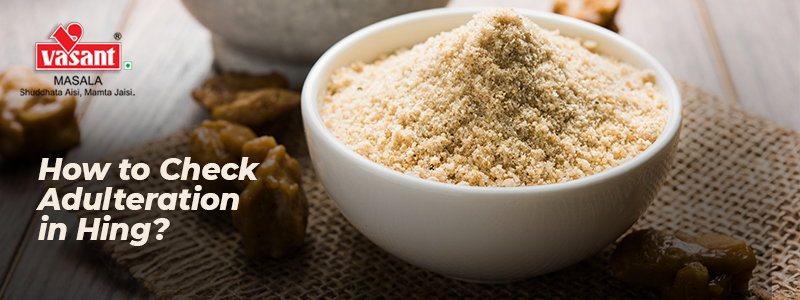
Indian dishes are packed with a lot of spices. As much as five to six spices are added to a single dish because they add aroma and flavor to an otherwise tasteless meal. These spices include red chilli powder, turmeric powder, coriander powder, hing, cloves, and cardamom. Among all these spices, we can consider hing to be the most flavorful spice that can elevate the taste of any dish. It is a very pungent spice and it is popularly known for adding tadka to Indian curries.
In this blog, you will find everything you need to know about hing, about how to find its adulteration, and benefits.
What is Hing?
Hing is a gum-like hard substance that is a species of ferula native to Southern Iraq. It is also a native of Afghanistan and Iran. This spice is popular in Indian cuisine where it is often referred to as 'Hing'. Hing is commonly dried and grounded into a coarse light yellow powder which is then used for tadka alongside jeera and a spoon of ghee. A pinch of hing is enough to elevate the flavors of other spices.
Asafoetida has a strong pungent flavor and a very strong odor which is because of its high concentration of sulphuric compounds. Europeans have named hing as 'Devil's Dung' because of its pungent smell and its Latin name Fetid also means stinking. Those who are not aware of its flavor, aroma, medicinal benefits, and uses, can respond negatively to its name.
The ancient medicinal system, Ayurveda, allows us to use hing to aid indigestion and gas. It also helps in treating diseases like bronchitis and kidney stones. However, spices are not as pure as before and have a lot of adulteration. To be safe from such unethical mixtures, you must check the adulteration of the spice you're using. We have listed two methods to check adulteration in hing which are as follows:
How to Check Adulteration in Hing:
-
Detection of Foreign Resin In Hing:
- Take a spoon full of hing and heat it over the flame of a candle.
- Here there are two possibilities. If hing is pure, it will burn like camphor whereas adulterated hing will not produce flame-like camphor.
-
Detection Of Soap Stone Or Earthy Matter In Hing:
- Take a spoon full of hing and mix it in a glass of water. Allow it to settle down
- If the hing is pure it will not leave any soap or earthy matter at the bottom, whereas, impure hing will leave the matter at the bottom.
Possible Health Benefits of Hing
-
Lowers Blood Pressure:
Hing helps in lowering blood pressure by relaxing blood vessels. However, only animals have experimented with this.
-
Contains Potential Anticancer Effects:
Certain lab tests and studies have been conducted on animals which suggest that hing might help to stop the growth and spread of breast and liver cancer cells.
-
Can Protect Brain Health:
Numerous studies on animals have been conducted to check whether hing can benefit brain health or not. In conclusion, scientists discovered that the consumption of hing may safeguard the human mind against memory loss and nerve damage in the brain.
-
Helps With Asthma:
Animal studies suggest that hing is beneficial for airway passage which is an important factor in treating asthma.
-
Antibacterial, antifungal, and antimicrobial qualities:
It can be said that hing may protect against pathogens, to fight against diseases like streptococcus bacteria.

